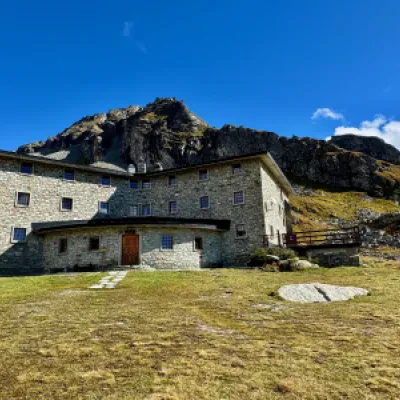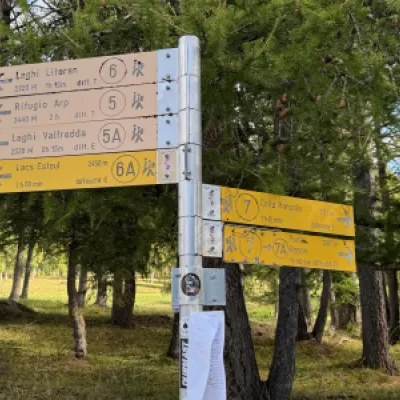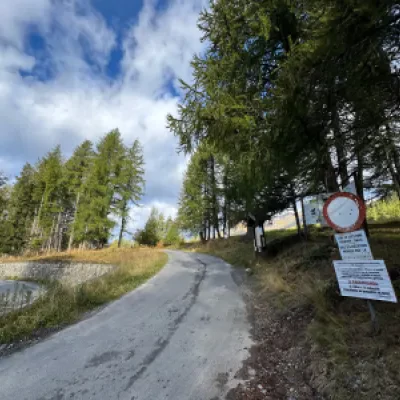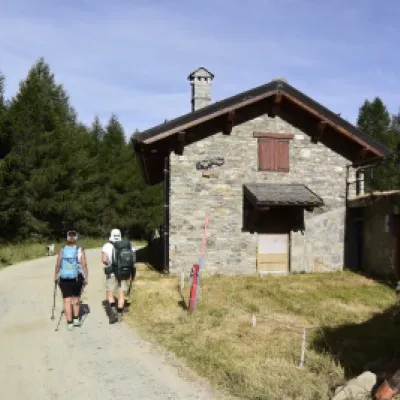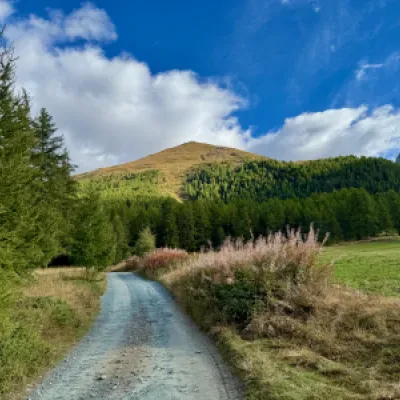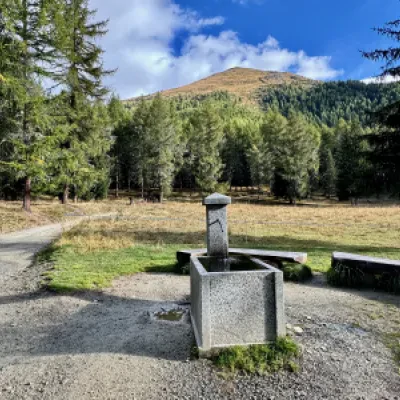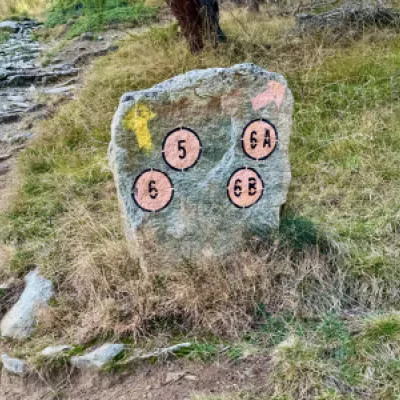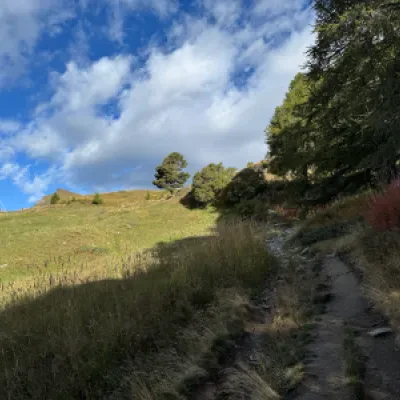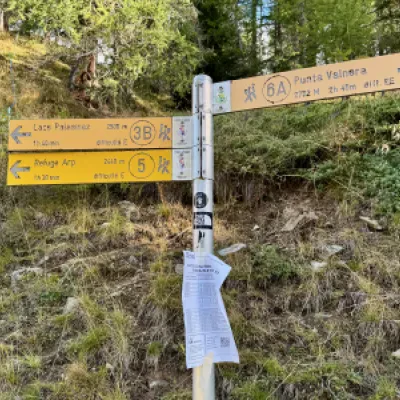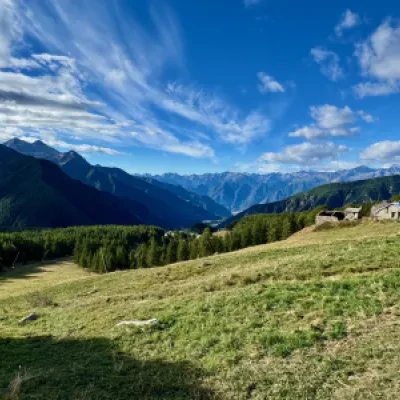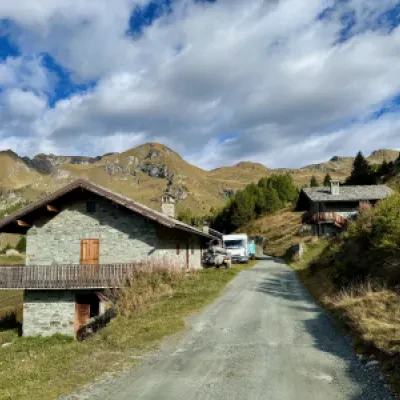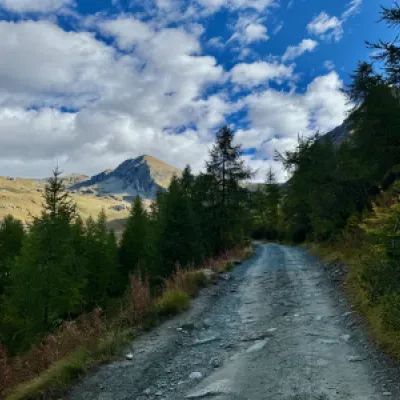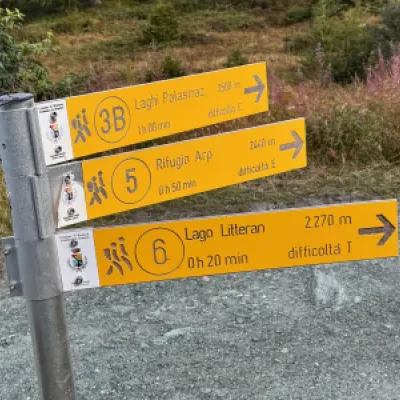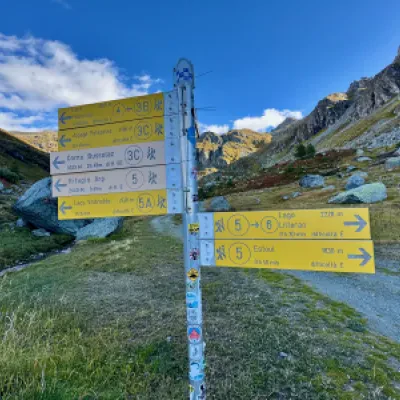Arp Refuge, from the Fénillettaz car park with path no. 5
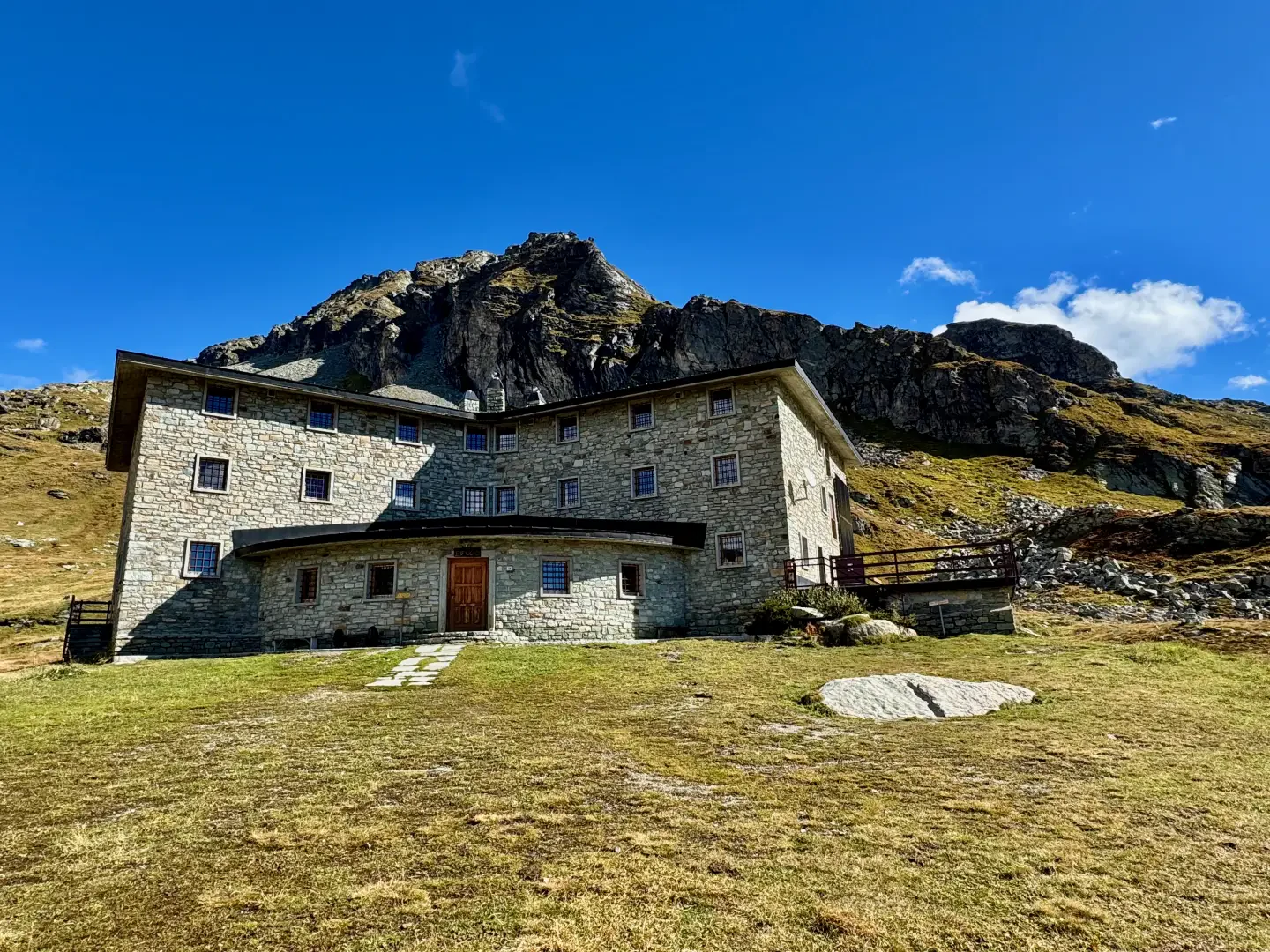
Access
Leave the motorway at the Verrès exit, enter the roundabout and take the second exit. Proceed in the direction of the town centre and, after 300 metres, turn left onto the regional road for Val d'Ayas. Follow the regional road for 16.5 kilometres, passing the villages of Challand-Saint-Victor and Challand-Saint-Anselme, before reaching Brusson. Pass the village and, just before the junction for Col de Joux, turn right to take the communal road to Estoul. Continue on the communal road for about 7 kilometres, passing the village of Estoul, before reaching a large car park 🅿️ where you can leave your car.
[0h38'] - [23km]
How to get there with GMaps
How to get there with Apple Maps
The starting point of the route is not reachable by public transport.
The directions provided were carefully checked on the date the route was taken. However, you are strongly advised to check any changes that may have occurred since then, especially regarding the access route to the starting point. Before embarking on your journey, it is advisable to consult up-to-date navigation tools for accurate and up-to-date directions. We recommend the use of satellite navigation apps, such as Google Maps or Apple Maps, to ensure the most accurate and safe route.
Introduction
The excursion to the Arp Refuge is an itinerary of medium difficulty, perfect for mountain enthusiasts seeking an immersive experience in the unspoilt nature of the Aosta Valley. The route, which is well signposted and accessible, winds its way through alpine pastures, larch woods and wide pastures, offering splendid views of the Ayas Valley and the surrounding peaks. The ascent develops in a varied environment, alternating between flat stretches and more demanding climbs, with passages between farm roads and narrower paths crossing grassy slopes. The final destination, the Arp Refuge, located at 2446 metres above sea level, is the perfect spot for a regenerating break, with the possibility of admiring the Alpine panorama and, for those who wish, continuing on to the surrounding peaks and the numerous lakes that dot this beautiful area.
Description
0h00' 0.00km From the signposts showing the main paths in the area, take a farm road which, after about 50 metres, meets a fork.
0h01' 0.05km Continue straight on, ignoring the signs for the Moucherolaz mountain pasture (1925m), and proceed on the level, leaving the isolated house of Prapitou (1886m) on your right, until you come to a fork. Keep to the right and begin the ascent in the presence of the antecedent of Mont Bieteron, leaving the pasture to enter the larch forest (Larix decidua). After a bend to the left, you reach a shelf with a fountain 💧 and a new fork. Continue straight on, following the signs for Rifugio Arp along the path. A little further on, near Fontaine (1903m), leave the farm road to take a path to the right that crosses the larch forest and leads to the right-hand edge of the ski slope. The path becomes a mule track as the gradient increases slightly and, in a short time, a fork is reached.
0h20' 0.85km Keep to the left and continue up the slope along the mule track to the right of the ski slope, until it joins the dirt road again, where you will come to a new signpost with directions to the hut.
0h30' 1.10km Turn left and follow the road, which soon passes above the hamlets of Chanlochère (2012m), offering interesting views of the lower Val d'Ayas and the peaks of the Glacier-Mont Avic group. The road follows a few hairpin bends and leads onto the grassy slope crossed by the ski lifts and, a little further on, the hamlets of Chavanne (2107m). After a short flat section, the road begins to climb again until it reaches a hairpin bend, where a marker post is located (2107m).
0h55' 2.14km Neglect the path for the Lacs de Palasinaz and continue on the dirt road, which, after a couple of bends, continues on the orographic left of the Messonère stream. Proceed slightly uphill between a few sparse larch trees, with the imposing mass of the Punta Valfredda in the background, until you come to a new signpost (2172m).
1h05' 2.80km Disregard the path to Lac Litteran and continue on the road, which, on a slight ascent, skirts the steep north-western face of Mont Bieteron. After a slight turn to the left, the road reaches a junction with a marker (2231m).
1h20' 3.73km Neglect the path on the right and continue straight on until you come to a large boulder. Take a small path that cuts across some hairpin bends in the road. Follow the yellow arrows and ascend the pastureland diagonally until reaching the Chavanne pastureland (2347m). Take the dirt road again and follow it up several hairpin bends until you reach the Palasinaz pasture (2402m) and a marker post.
2h00' 5.03km Continue straight on along a grassy track that becomes a path near a ruin. The path, with a few short ups and downs, heads towards the little waterfall of the Valfredda lakes' emissary stream. Ford the stream and, in a short time, you will reach the Arp hut (2446m) 2h15' 5.91km .
The return journey is along the same route followed during the ascent 1h15' 5.91km .
